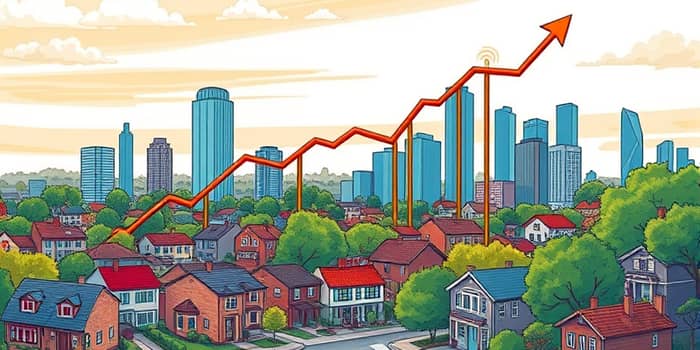
In 2025, the U.S. housing market finds itself at a crossroads as borrowing costs climb and demand recalibrates. Buyers, sellers, and investors are all grappling with the new reality of elevated financing expenses.
The Federal Reserve’s determination to tame inflation has kept the 30-year mortgage rate near 6% for much of the year, a level unseen in over fifteen years. This persistent environment of high rates has dramatically reshaped the calculus for anyone seeking to buy or invest in property.
Even a half-point increase can translate into hundreds of dollars in extra monthly payments. For example, a $400,000 loan at 6% demands $2,398 per month in principal and interest, whereas at 7% it jumps to $2,661. Over three decades, that difference exceeds $90,000.
Despite these headwinds, home prices remain historically elevated. The median existing-home price was $414,000 in April 2025, up 1.8% year-over-year and only slightly below its June 2024 peak of $426,900.
Several forces underpin this resilience:
First-time buyers and lower-income households face the steepest obstacles. Affordability is near its worst levels since before the pandemic, especially in high-cost coastal markets like California and New York.
In contrast, inland and Midwestern regions with more moderate pricing have seen smaller monthly payment swings, offering some relief for hopeful buyers. Renters, meanwhile, are staying put longer, fueling demand in the multifamily sector and keeping rental rates elevated.
On the investment side, elevated rates have led to a costlier financing environment, prompting investors to demand higher yields. Commercial cap rates have risen in tandem with Treasury yields, making some transactions unviable under previous underwriting assumptions.
History offers some perspective: in the high-rate era of the 1980s, home purchases persisted despite rates topping 12%. Strong life-event demand—marriages, births, relocations—often trumps headline rates.
This suggests today’s slowdown is more normalization than collapse. While transaction volumes have dipped from pandemic highs, they remain in line with long-term averages.
Most forecasts anticipate a gradual easing of rates toward the mid-5% range should inflation moderate and the Fed pivot. A modest decline could reignite buyer interest, especially given continuing supply constraints.
For investors, improved financing costs would boost deal flow in both residential and commercial sectors, though underwriting is likely to stay conservative until rate trajectories stabilize.
In this challenging climate, participants can consider:
The 2025 real estate market is defined by housing affordability crises and cautious capital deployment. Yet opportunity remains for those who adapt their strategies to the evolving environment.
By understanding the interplay of interest rates, supply constraints, and demographic trends, buyers and investors can make informed decisions. As the year unfolds, small shifts in inflation and Fed policy may unlock renewed momentum, proving that even in headwinds, well-prepared participants can still find their path forward.
References













